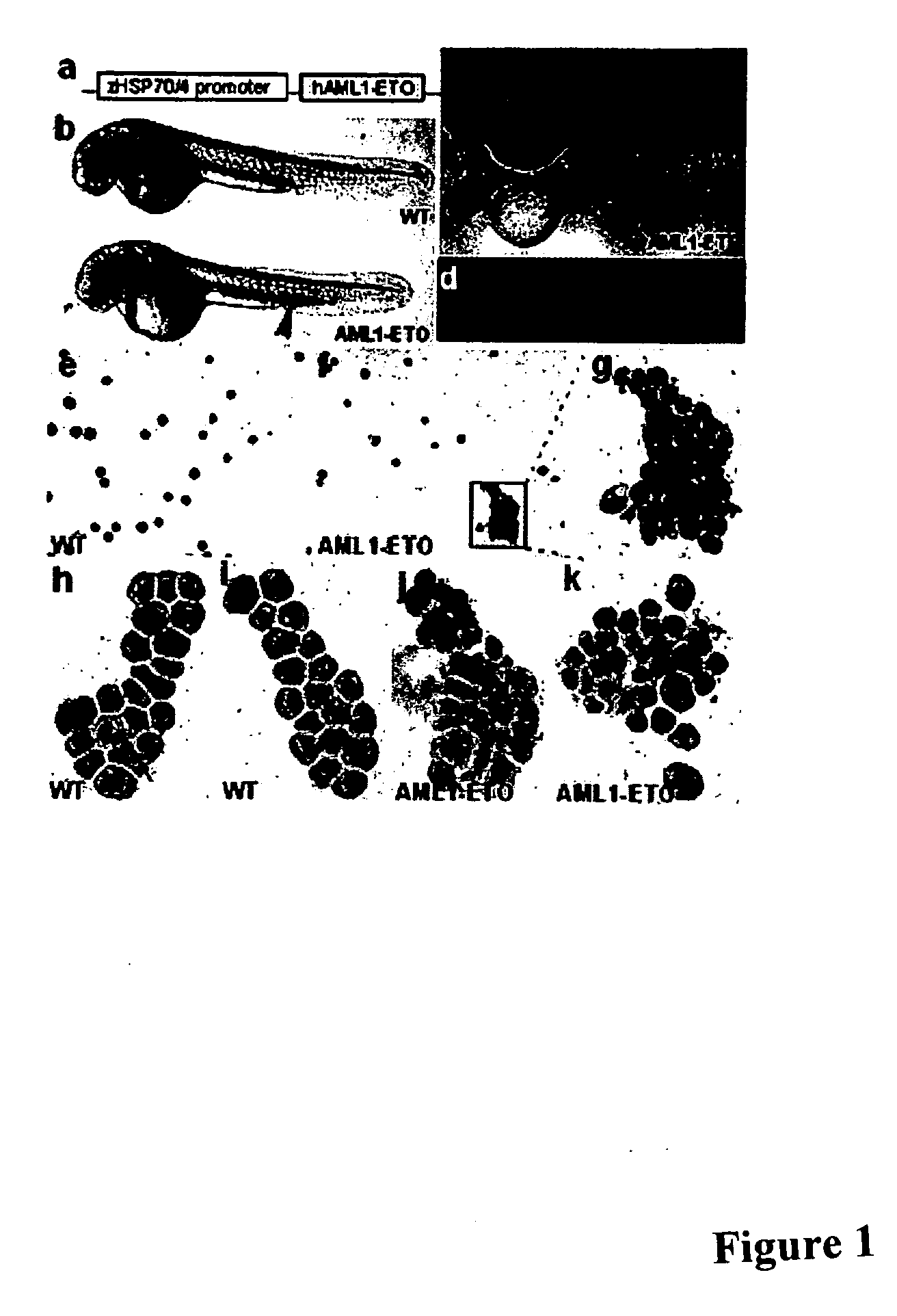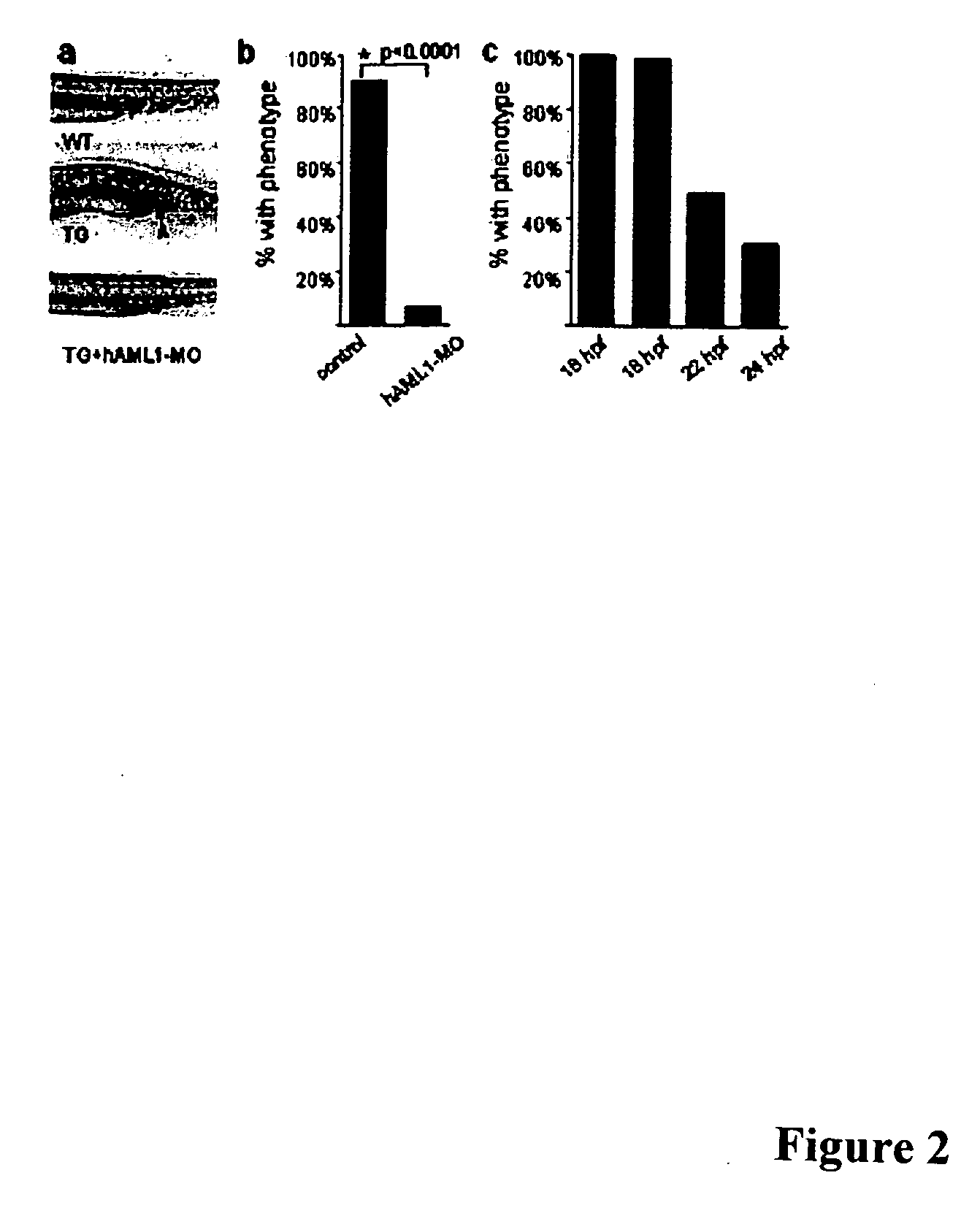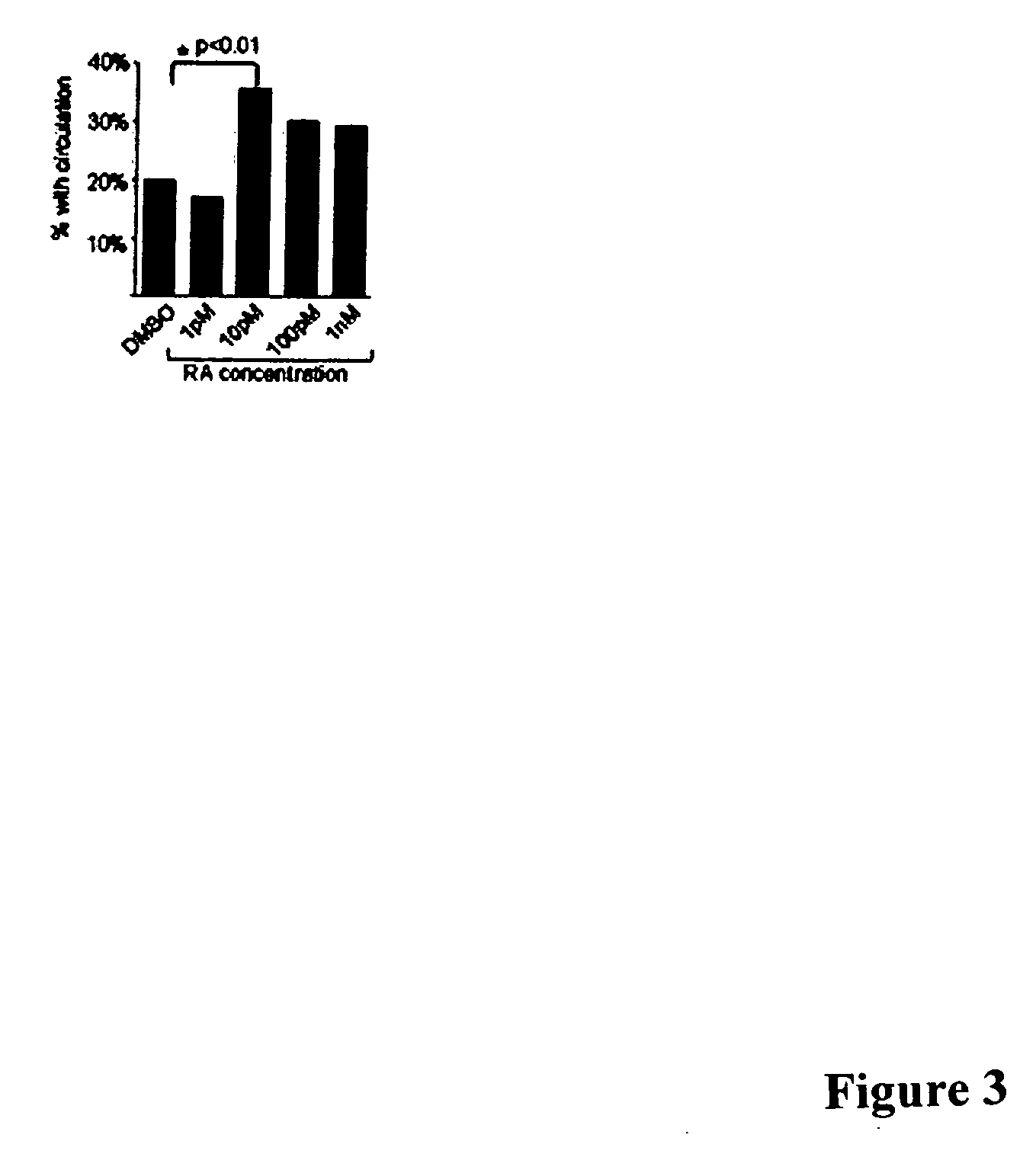Zebrafish models of acute myelogenous leukemia
a myelogenous leukemia and zebrafish technology, applied in the field of zebrafish models of acute myelogenous leukemia, can solve the problems of not knowing if any of these molecules are required, mouse models may not be ideal for identifying or testing disease modifiers, and the identification of the target genes and their roles in aml pathogenesis remains poorly understood, etc., to increase the activity of tis11b, and increase the stability
- Summary
- Abstract
- Description
- Claims
- Application Information
AI Technical Summary
Benefits of technology
Problems solved by technology
Method used
Image
Examples
Embodiment Construction
[0037] As is discussed above, approximately 15% of all cases of acute myelogenous leukemia (AML; FAB-M2 subtype) are caused by a t(8;21) chromosomal translocation that results in fusion of AML1 and ETO proteins (Koeffler, Ann. Intern. Med. 107:748-758, 1987; Tashiro, Cancer 70:2809-2815, 1992). We have developed a model of AML in zebrafish using a transgenic line that stably expresses a human AML1-ETO fusion protein under the control of an inducible promoter. Induced AML1-ETO expression causes a block in hematopoietic maturation that manifests itself as a reproducible accumulation of immature hematopoietic progenitors in the intermediate cell mass (ICM) and a concomitant loss of circulating cells, and these phenotypes can be readily detected in the intact, transparent zebrafish. According to the invention, this model of AML can be used in automated, whole-organism, high-throughput assays to screen for small molecules that reverse the AML1-ETO phenotype.
[0038] The invention thus pro...
PUM
| Property | Measurement | Unit |
|---|---|---|
| Time | aaaaa | aaaaa |
| Time | aaaaa | aaaaa |
| Temperature | aaaaa | aaaaa |
Abstract
Description
Claims
Application Information
 Login to View More
Login to View More - R&D
- Intellectual Property
- Life Sciences
- Materials
- Tech Scout
- Unparalleled Data Quality
- Higher Quality Content
- 60% Fewer Hallucinations
Browse by: Latest US Patents, China's latest patents, Technical Efficacy Thesaurus, Application Domain, Technology Topic, Popular Technical Reports.
© 2025 PatSnap. All rights reserved.Legal|Privacy policy|Modern Slavery Act Transparency Statement|Sitemap|About US| Contact US: help@patsnap.com



